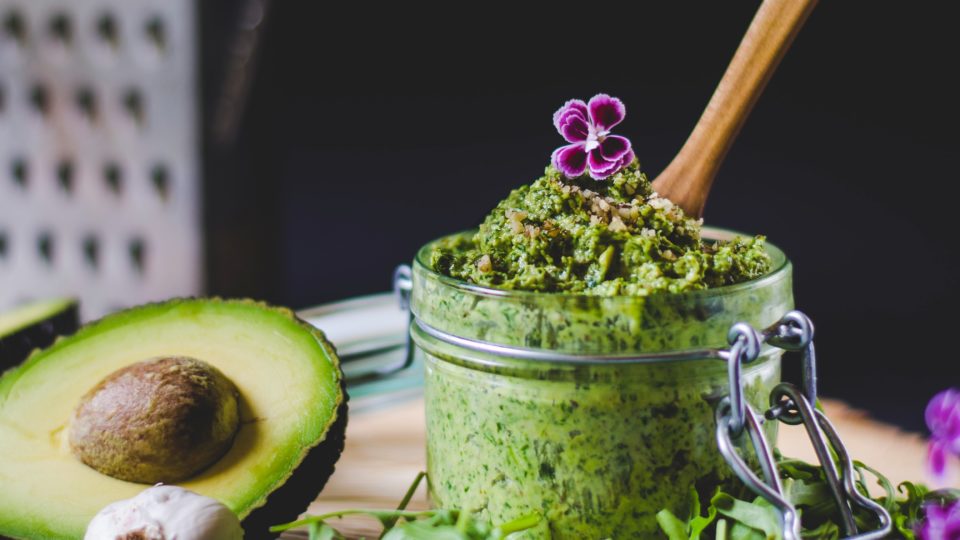Do Avocados Have Vitamin C?
The short answer is yes, avocados contain vitamin C! Perhaps your next question is how much vitamin C and is that enough? All great questions. Let’s see what the science has to say.
—
Vitamin C is a water-soluble vitamin that is naturally present in some foods. Best sources include fruits and vegetables. Vitamin C is also added to some foods (think fortified food products), and it’s available as a dietary supplement.
According to the NIH (2020) “Humans, unlike most animals, are unable to synthesize vitamin C endogenously, so it is an essential dietary component”.
Consuming five servings of fruits and vegetables per day can provide more than 200 mg of vitamin C. This is more than the recommended dietary allowance (RDA) of 75-90 mg for healthy adults 19 years and older (females and males, respectively). Because it is a water-soluble vitamin, absorbed but unmetabolized ascorbic acid is excreted in the urine (NIH, 2020).
—
As an aside: I heard vitamin C can treat and/or prevent the common cold. Is that true?
I emphasized that the RDA for vitamin C was based on “healthy” adults. That’s because there is evidence that higher intakes of at least 200 mg per day taken continuously (vs after the onset of cold symptoms) might be helpful for individuals under stressful conditions* and those with marginal vitamin C status** (NIH, 2020)(Hemilä & Chalker, 2013). In these people, but not the general population, continuous and higher intakes of vitamin C was shown to reduce cold incidence. Taking vitamin C after the onset of cold symptoms does not appear to be beneficial.
*These people were exposed to extreme stress from physical exercise or weather conditions.
**Those at risk of obtaining insufficient amounts of vitamin C include individuals with limited food variety, chronic medical conditions, malabsorption issues, the elderly and those who smoke.
In the general population, continuous and higher intakes of vitamin C might shorten the duration of the common cold and reduce symptom severity. If taken after the onset of cold symptoms, vitamin C does not appear to affect cold duration or symptom severity (NIH, 2020)(Hemilä & Chalker, 2013).
—
How do avocados stack up?
The official avocado serving is one-fifth of a fruit (30 g); however, the average consumption is closer to one-half an avocado (68 g). At these servings, avocado fruit contains 2.6 mg and 6.0 mg of vitamin C, respectively (Dreher & Davenport, 2013).
The levels of vitamin C found in avocados may seem low compared to your standard supplement. Common dietary supplements contain 500 mg to 1000 mg of vitamin C per dose, whether that is pills (tablets and capsules), chewables, liquids or powders.
—
Another aside: What’s the difference between natural and synthetic forms of ascorbic acid?
The form of vitamin C most frequently used in supplements is ascorbic acid, which has equivalent bioavailability to that of naturally occurring ascorbic acid in foods (NIH, 2020) (The Linus Pauling Institute, 2016).
In other words, the vitamin C that you find in food is equivalent to that found in supplements.
But this does not take into account “nutrient synergy”, which is when nutrients work together to create an effect that you can’t get from either nutrient alone.
When it comes to avocados, those two nutrients are the antioxidant vitamins C and E.
—
Avocados are one of the few foods that contain significant levels of both vitamins C and E (Dreher & Davenport, 2013). In addition to its well-known role in immune function, vitamin C also plays an important role in antioxidant defense, which contributes to its protective cardiovascular and vascular health effects (Dreher & Davenport, 2013)(The Linus Pauling Institute, 2013). However, the health benefits associated with the vitamin C found in avocados is partly due to the synergistic effect of vitamin C with vitamin E. In other words, both vitamins are required to maintain antioxidant protection (Dreher & Davenport, 2013).
Avocados contain many different nutrients and phytochemicals with potential benefits for cardiovascular and vascular health, weight management, and healthy aging (Dreher & Davenport, 2013). Taken as a whole food, these nutrients and compounds work together to create health effects that you may not get from either nutrient alone.
—
References
- Dreher ML & Davenport AJ. 2013. Hass Avocado Composition and Potential Health Effects, Critical Reviews in Food Science and Nutrition, 53:7, 738-750, DOI: 10.1080/10408398.2011.556759
- National Institutes of Health (NIH). 2020. Vitamin C Fact Sheet for Health Professionals. Accessed online 05/10/20 via https://ods.od.nih.gov/factsheets/VitaminC-HealthProfessional/
- The Linus Pauling Institute Micronutrient Information Center. 2016. The Bioavailability of Different Forms of Vitamin C (Ascorbic Acid). Accessed online 05/10/20 via https://lpi.oregonstate.edu/mic/vitamins/vitamin-C/supplemental-forms
- Hemilä H & Chalker E. 2013. Vitamin C for preventing and treating the common cold. Cochrane Database of Systematic Reviews. Issue 1. Art. No.: CD000980. DOI: 10.1002/14651858.CD000980.pub4. Accessed online 05/10/20 via https://www.cochranelibrary.com/cdsr/doi/10.1002/14651858.CD000980.pub4/epdf/full

